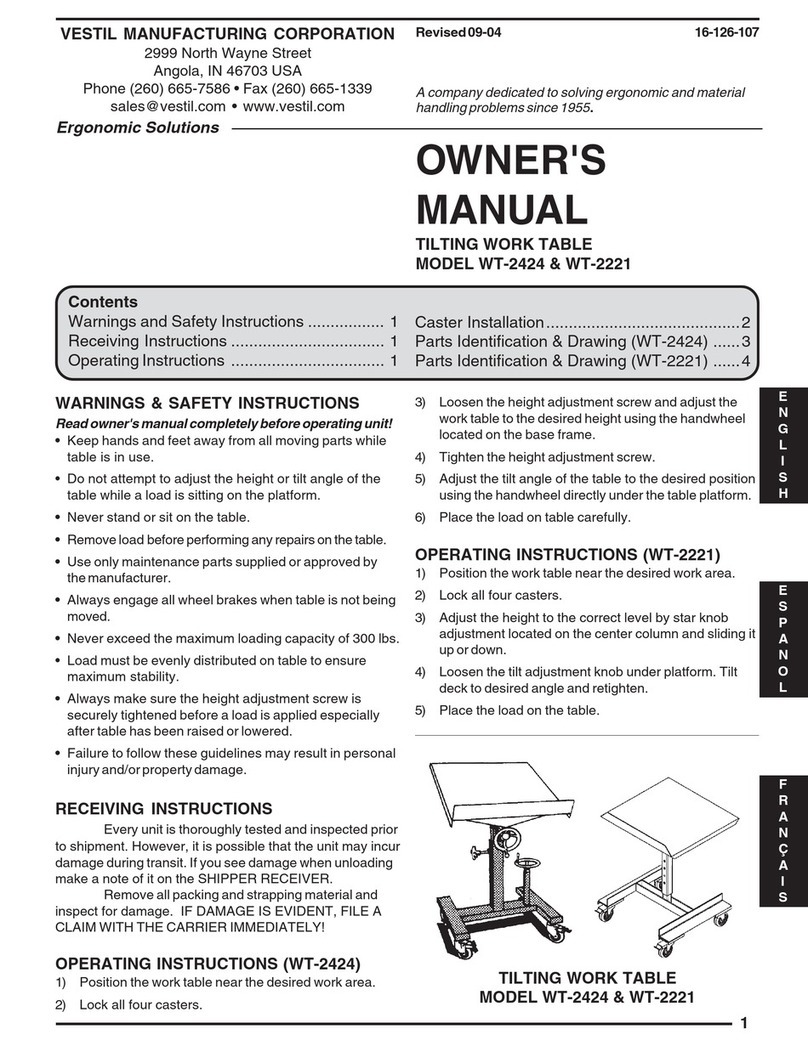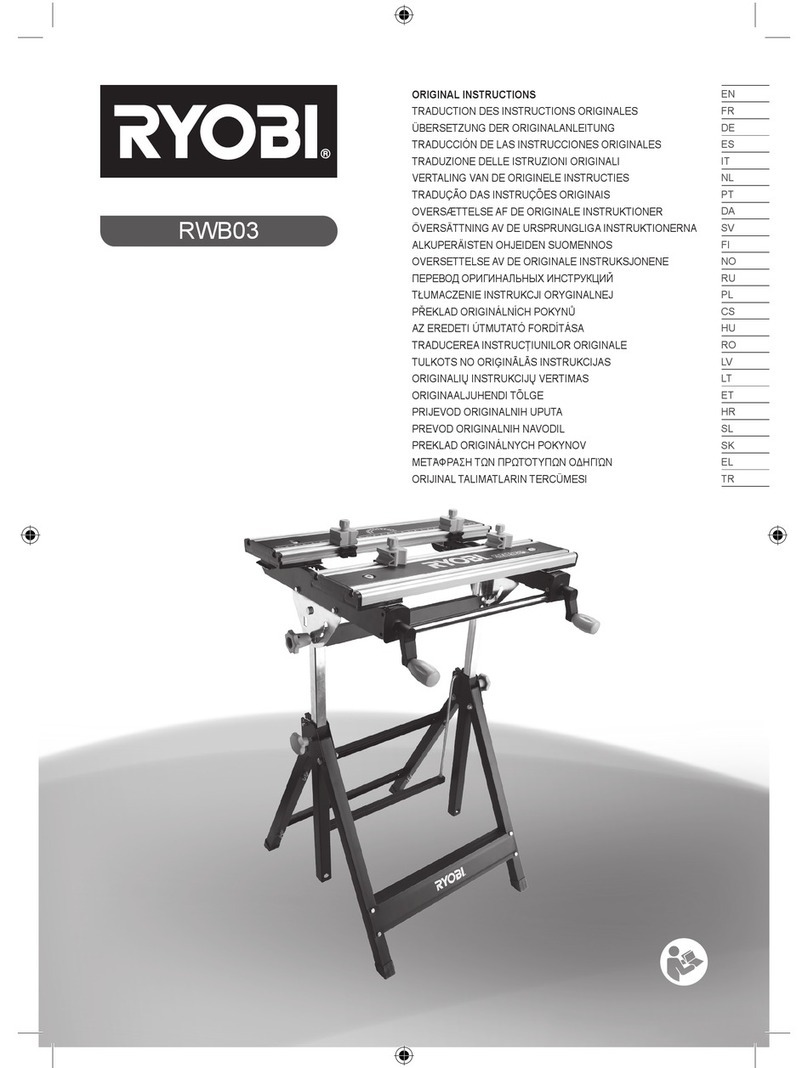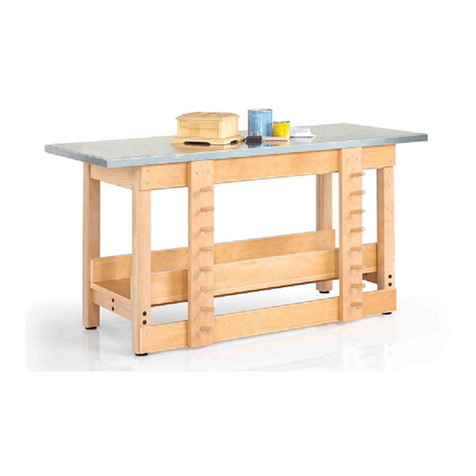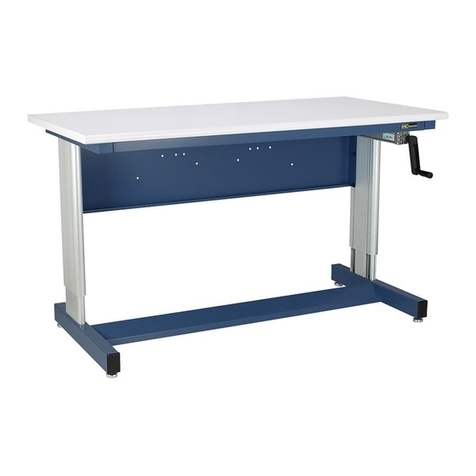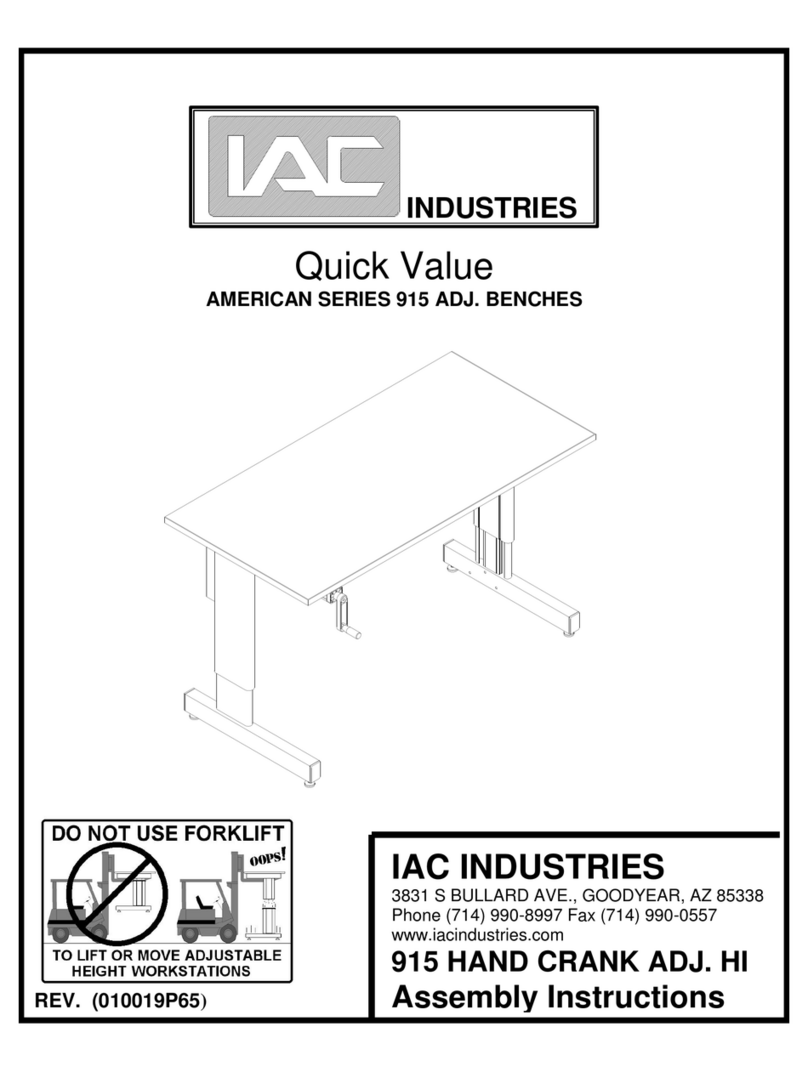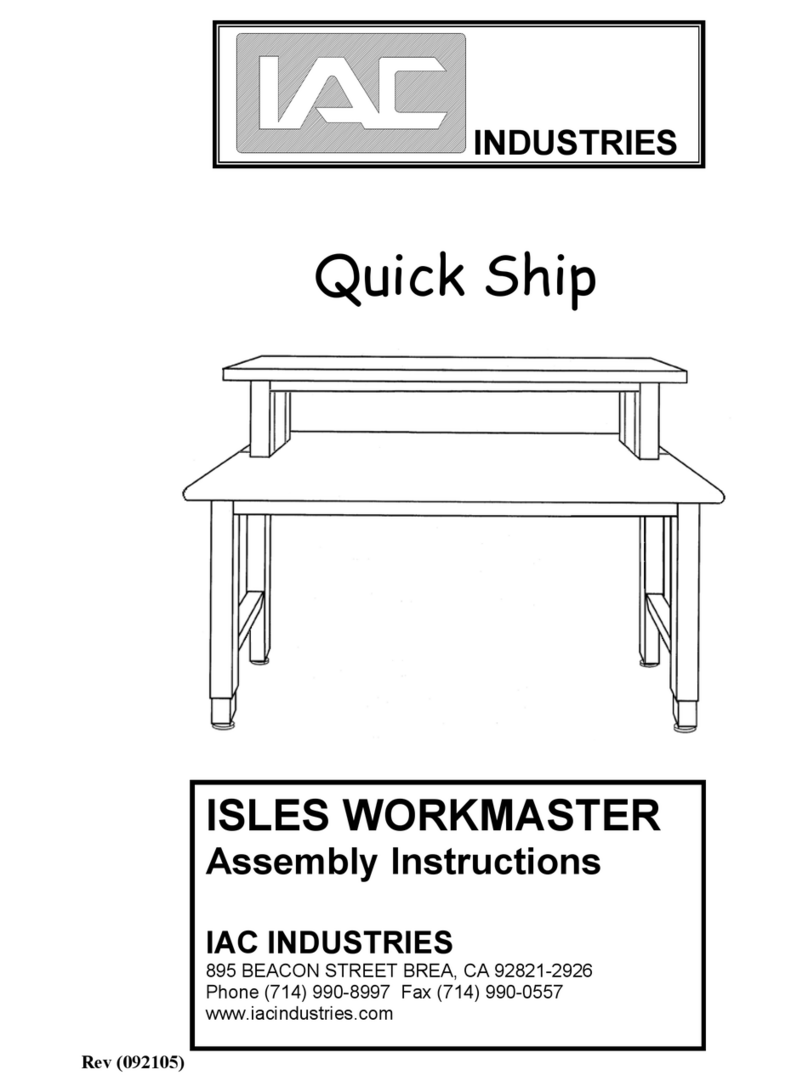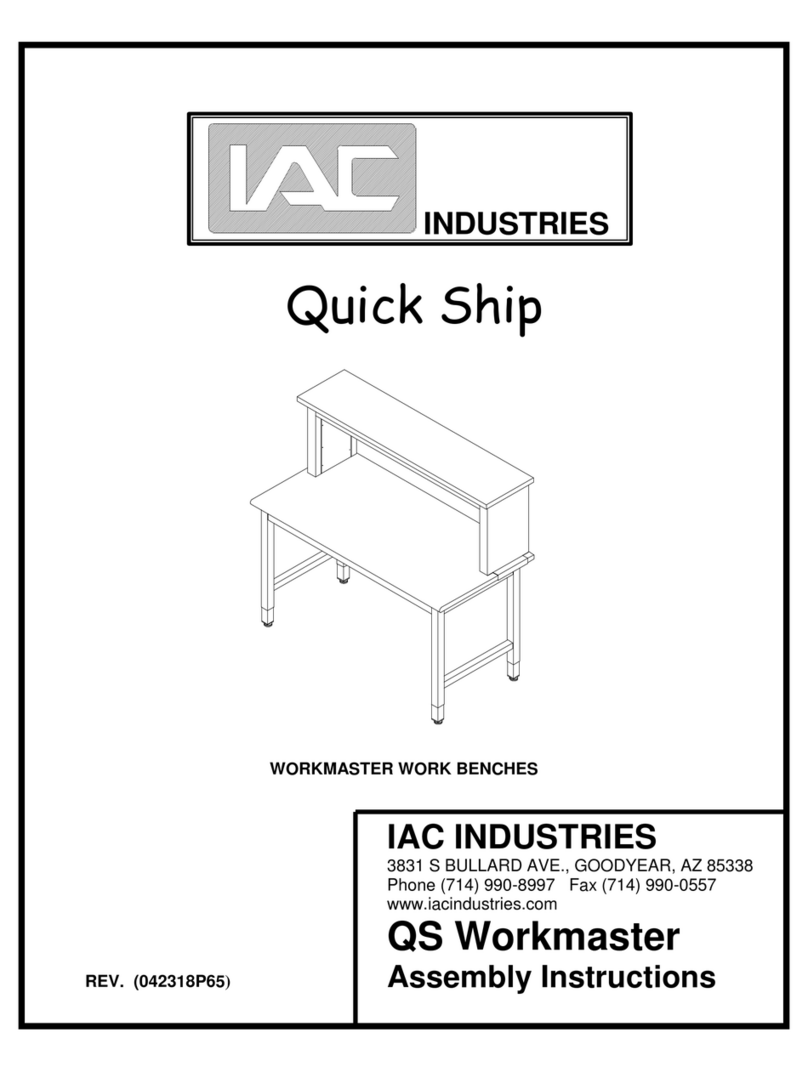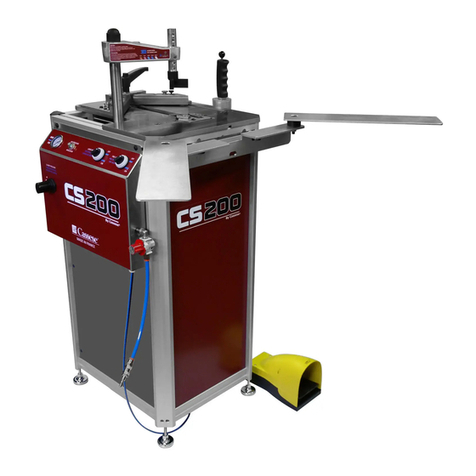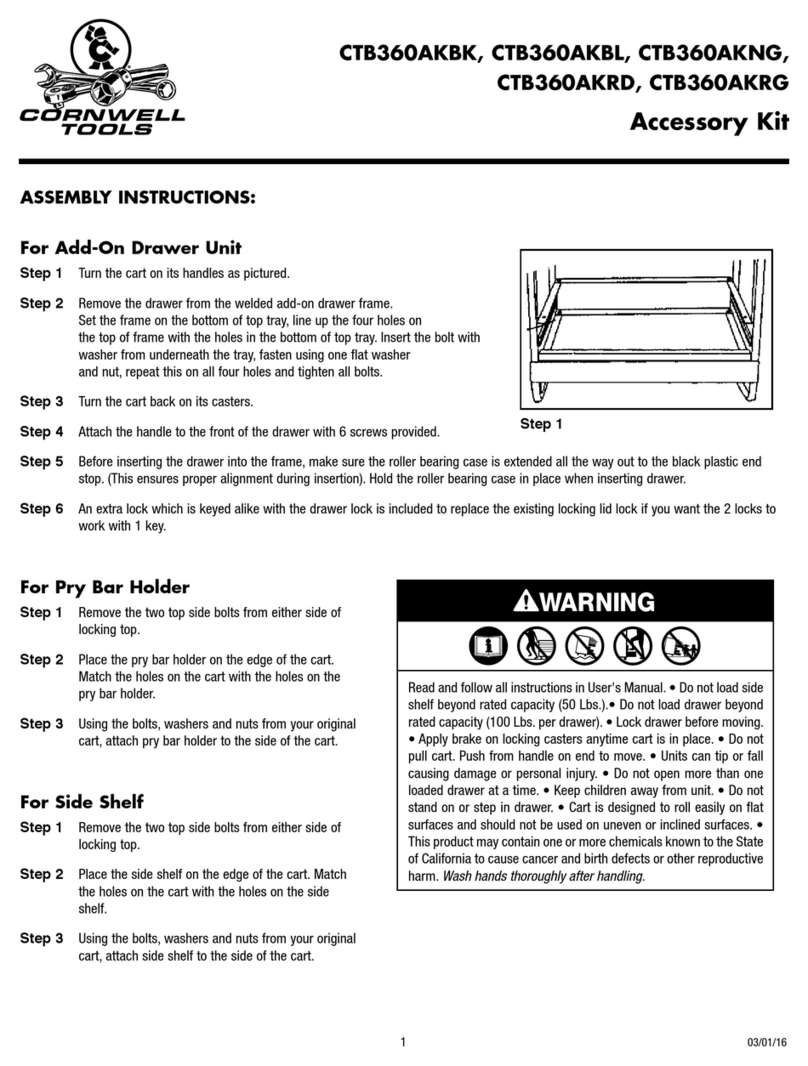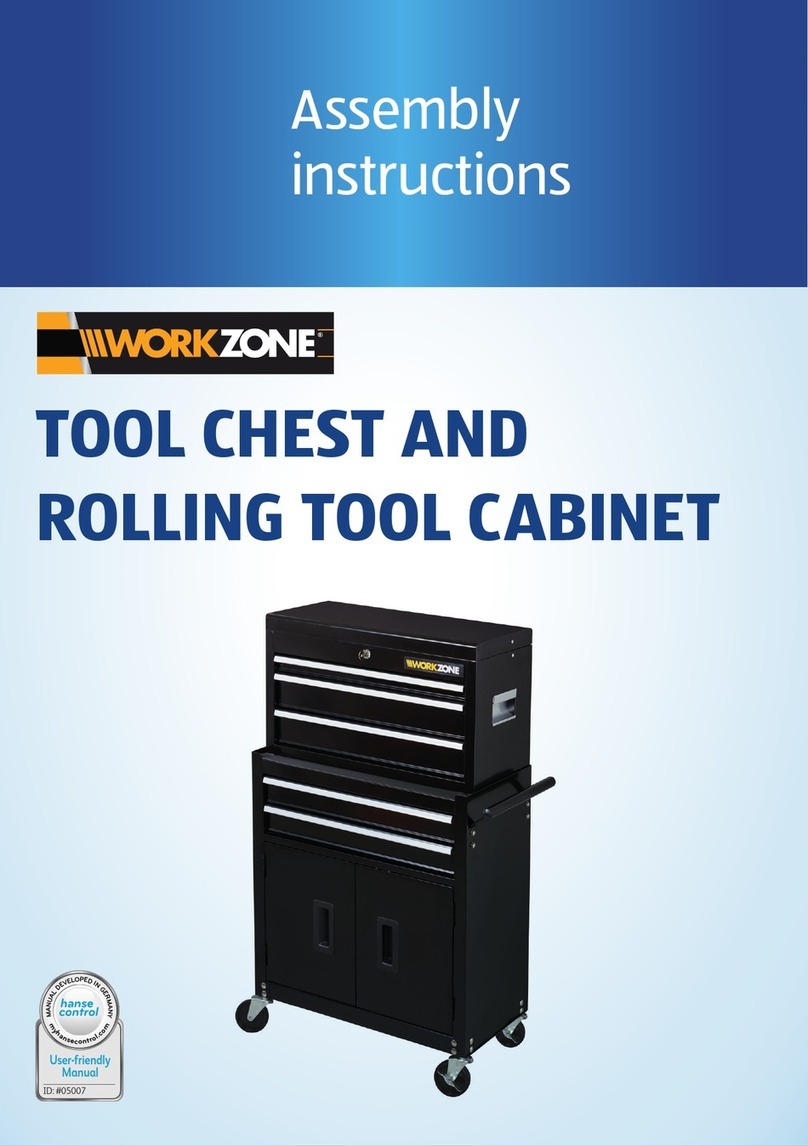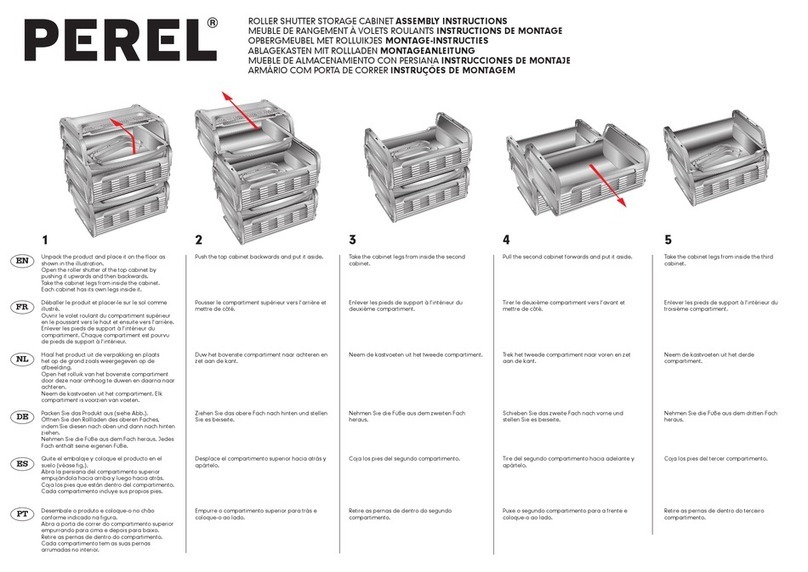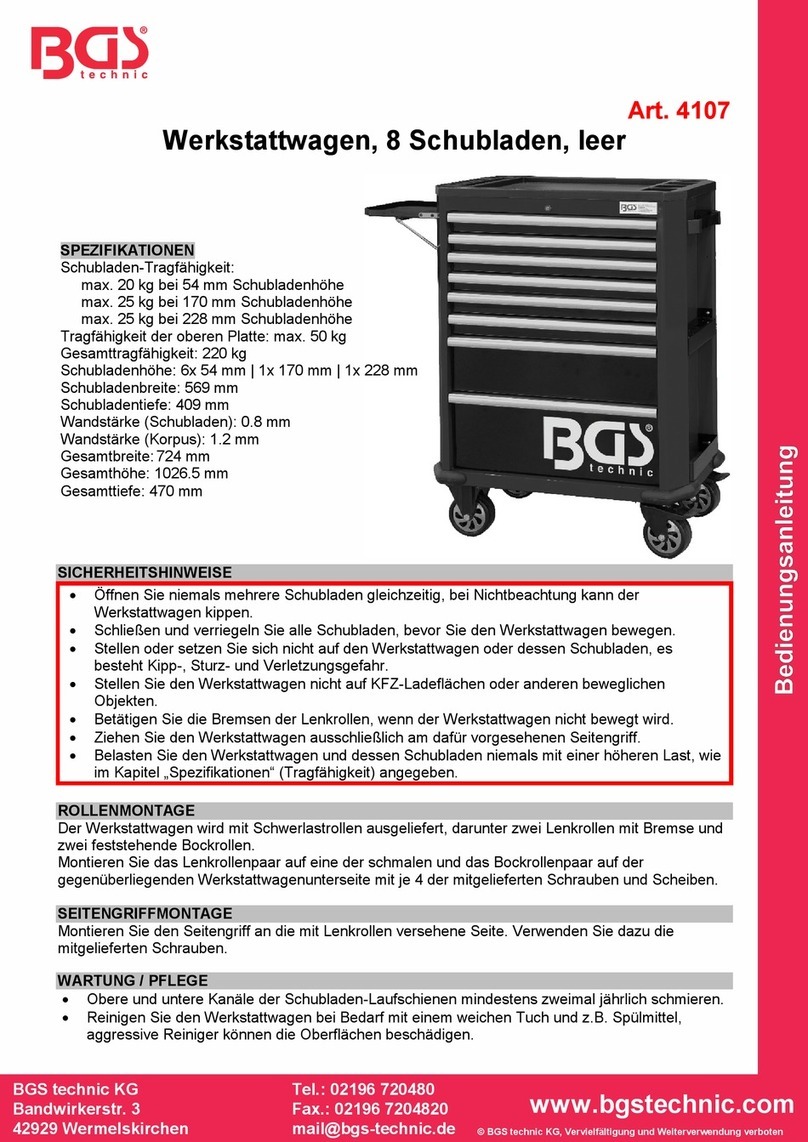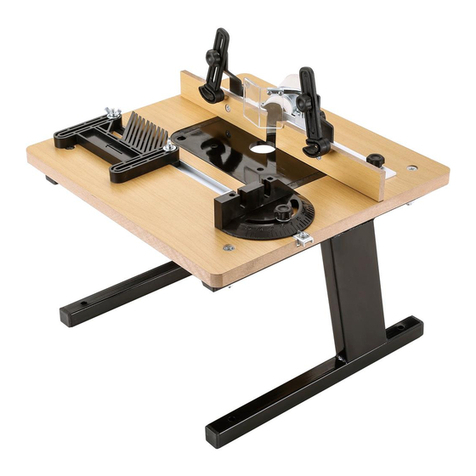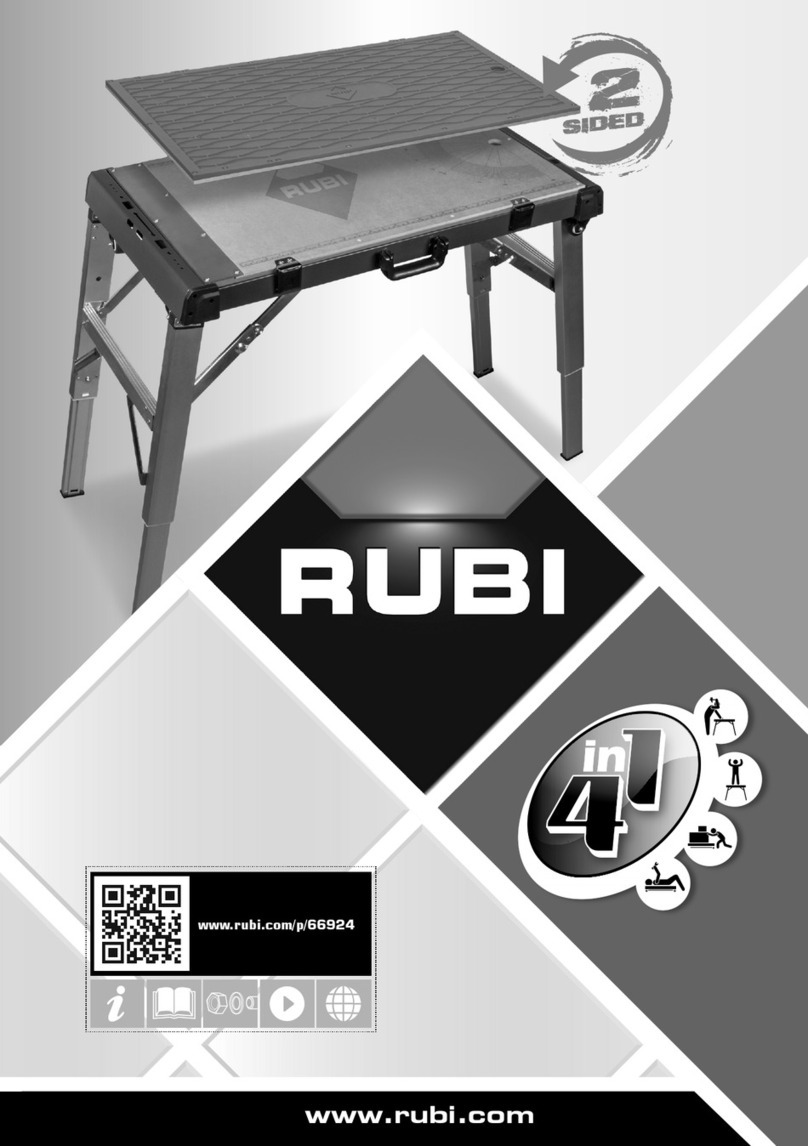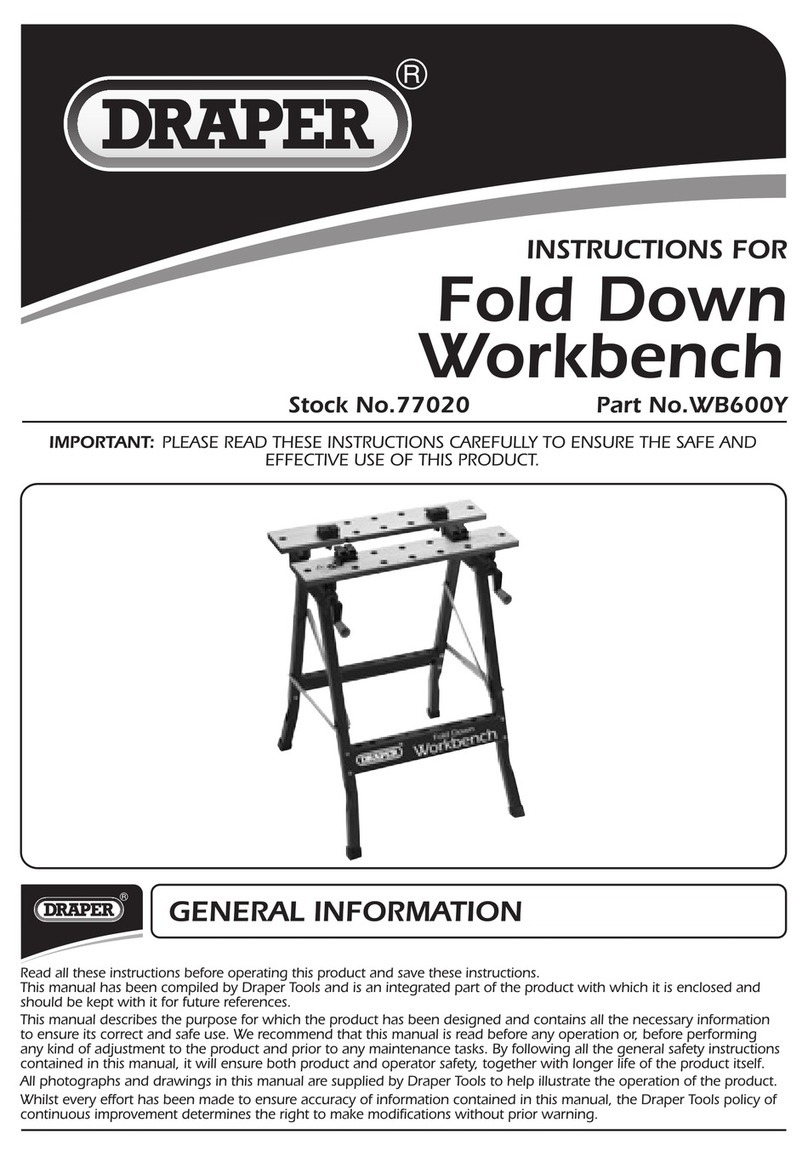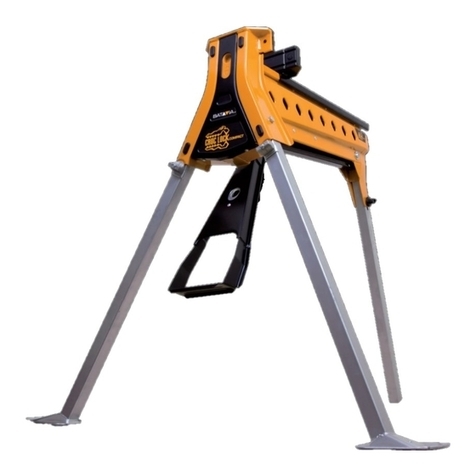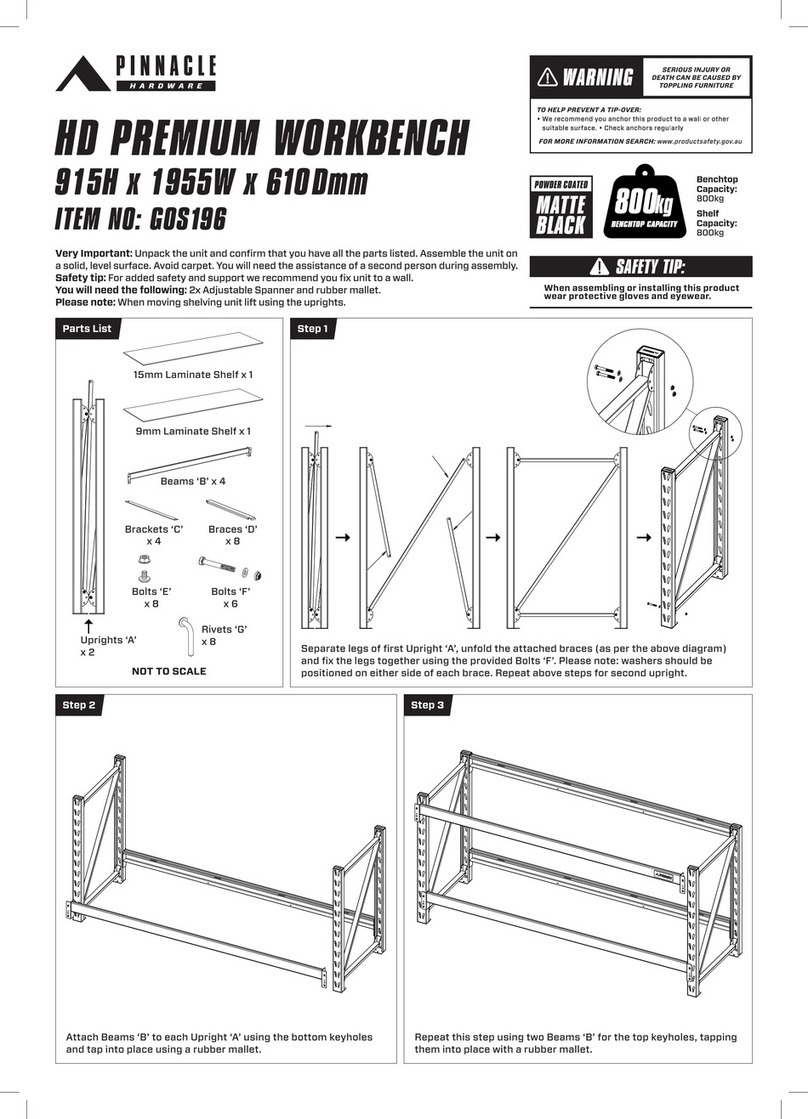
5. Loosely attach one end of the modesty panel (item 4) to one end of the leg assemblies
(item 2) by aligning up the three 1/4-20 x .75 SQ. Head GR2 Bolt (item D) into the modesty
panel (item 4) holes and attaching that end using the a 1/4 flat washers (item B) and a 1/4-
20 Hex Keps nut (item C) for each of the three bolts. Leave hardware loose.
6. Install the other end of the modesty panel (item 4) to the other end of the leg assemblies
(item 2) by aligning up the three 1/4-20 x .75 SQ. Head GR2 Bolt (item D) into the modesty
panel (item 4) holes and attaching that end using the a 1/4 flat washers (item B) and a 1/4-
20 Hex Keps nut (item C) for each of the three bolts. Leave hardware loose.
7. Slide down the modesty panel (item 4) until it makes contact with the worksurface (item 1).
Install both the hardware for the modesty panel (item 4) to the leg assemblies (item #2) and
the hardware for the modesty panel (item 4) to the worksurface (item 1) by using 1/4-20x.75
hex head bolts (item A) and 1/4 flat washers (item B) Leave hardware loose.
8. With the bench assembly still in the upside down position, install the Stiffener Beam (item 5)
to each end of the leg assemblies (item #2) using 1/4-20x.75 hex head bolts (item A) and
1/4 flat washers (item B) Leave hardware loose.
9. Square the frame as much as possible and tighten the bench frame bolt first. Then tighten
the bolts connecting the frame to the worksurface being careful not to over tighten.
10. Loosely attach hand crank rear mounting bracket (item K) to the rear of pump system
using10-32 x 3.00 phillips screw (item E), #10 flat washer (item F) and #10-32 hex kept nut
(item G) as shown in Figure 2 below.
11. While the bench is upside-down raise the leg assemblies to their highest point by turning
the hand crank clockwise. Secure hand crank pump hydraulic lines to underside of
worksurface using cable mounts (items M), cable ties (items N) and #6 x .50 phillips screws
(items L) being sure not to kink or damage the lines in anyway.
12. Lower the leg assemblies SLOWLEY by turning the hand crank counter clockwise. If the leg
assemblies do not lower apply pressure to them by pushing down on each leg. Once the leg
assemblies are at their lowest level check to make sure the hydraulic lines are not kinked or
pinched by the frame in anyway. Align the mounting slots in hand crank bracket with inserts
in worksurface and attach using 1/4-20 x .75 hex head bolts (item A) and 1/4 flat washers
(item B) as shown in Figure 2 below.
13. Secure the front end of pump system to front beam using 10-32 x 3.00 phillips screws (item
E) and #10-32 hex kept nut (item G) Figure 2. Tighten bolts and screws.
14. When turning bench assembly right side up be sure the leg assemblies DO NOT separate
as this may cause damage to the hydraulic system. It may take as many as 4 people to turn
bench over.
15. When moving bench into place be sure to lift it by the bottom of the leg assemblies only. DO
NOT lift it by the worksurface as this can cause damage to the hydraulic system.
